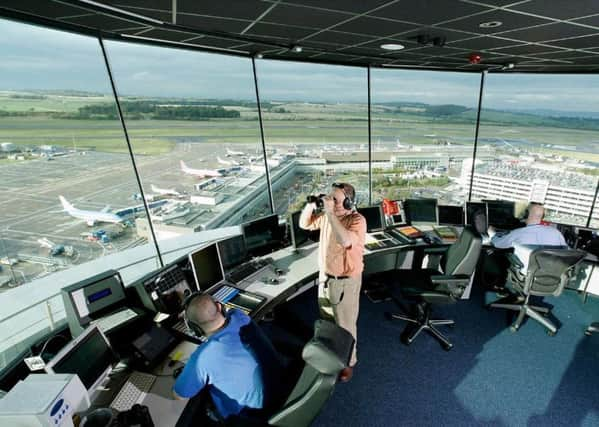Man and machine still go together


Over the generations, industrialisation and technological innovation has seen machines replicate and improve on the “muscle power” of humans and animals. In this dimension of “man versus machine”, predicting and delivering future abilities has arguably been, and will continue to be, relatively straightforward.
However, although repetitive and predictive capabilities have been replicated and enhanced through computer systems, replacing the more subjective decision-making qualities of the human have proven more challenging. So will technology ever replace the more advanced aspects of the human?
Advertisement
Hide AdAdvertisement
Hide AdAt NATS, we provide Air Traffic Control (ATC) services for in excess of two million flights per year from control centres at Swanwick, on the south coast of England, and Prestwick, on the west coast of Scotland. Today’s air traffic controllers have both an innate and developed ability to maintain a complex picture of the aircraft under their control, informed by data from a suite of ATC tools, eg communications, surveillance and navigation. They are trained to maintain the highest capability and professional judgment to ensure the safest operations within the ever-changing situation of their airspace. It sounds complex and challenging and it is, but rest assured the personnel that keep the UK and North Atlantic skies safe are among the best in the world.
The technology that provides today’s ATC tools has been progressively developed. However, with the ever-increasing complexity of the skies, it is essential we deploy technology to meet the needs of modern air traffic control. It is also important that we train our staff on how to use this new technology.
Therefore, the combined ability of the technology, people and procedures must take an incremental step to prepare for the future, and this has started for the whole organisation with the next-generation systems now being deployed.
However, the question posed during these developments is: to what extent should technology be used to enhance or replace the human capability? A question which is not only limited to ATC but, I imagine, to all industries where there is a human decision and judgment dimension.
Technologists can generally put forward a case that demonstrates a human-based activity can be enhanced or replaced by technology. When such proposals are subsequently tested with day-to-day known scenarios, nine times out of ten their logic stands true. However, the acid test for me is driven by Murphy’s Law – “If anything can go wrong – it will”.
ATC provides a service 24 hours a day, seven days a week, 365 days a year and to achieve this we have developed advanced layers of protection against Murphy’s Law. The technology parts of the system deal very well with the known possibilities. However, the capability of detecting the unexpected is where the human capability stands out and technology still lags.
A contract of trust must exist between the human and technology, and that trust has to be won from the user. Without a material level of trust, then even the smallest of unexpected system behavioural issues risks user rejection, the inability to introduce the new way of working and potentially puts at risk the desired business outcomes.
At NATS we fully recognise the need for this trust and have tried to learn from the past to ensure people’s earliest possible involvement when introducing new systems. The user training prior to the introduction of systems must be robust and assessed by the users as fit for purpose. In addition, this training must continue to ensure that users are capable, to the best of their abilities, of dealing with those Murphy’s Law moments.
Advertisement
Hide AdAdvertisement
Hide AdThe principles are not complex, being a continuous loop of “engage, develop, engage, build, engage, implement, engage, maintain”.
I am not an academic but in my experience, as long as we continue to find previously unknown system behaviours that technology has not yet been taught how to deal with, humans should always prevail.
So the question I posed at the beginning should perhaps be “do we want technology to replace the more advanced aspects of the human? For me, the answer is not until the trust contract is 100 per cent but until then, continuing with innovation to remove complexity from ATC activity and our everyday lives is what technology does best, which is why, where possible, we should embrace it.
• Alastair Muir, operations director, NATS Prestwick Centre www.nats.aero
SEE ALSO